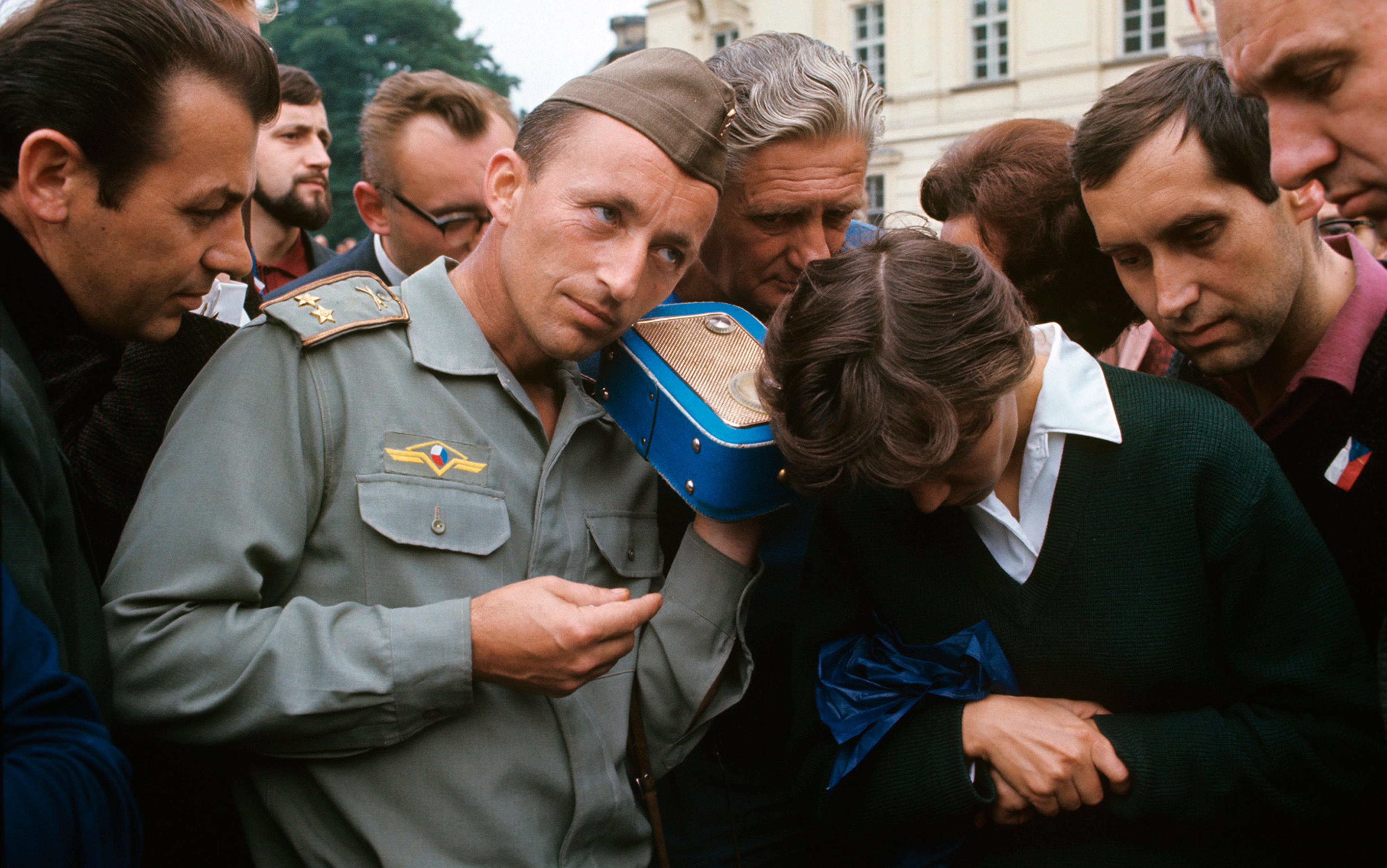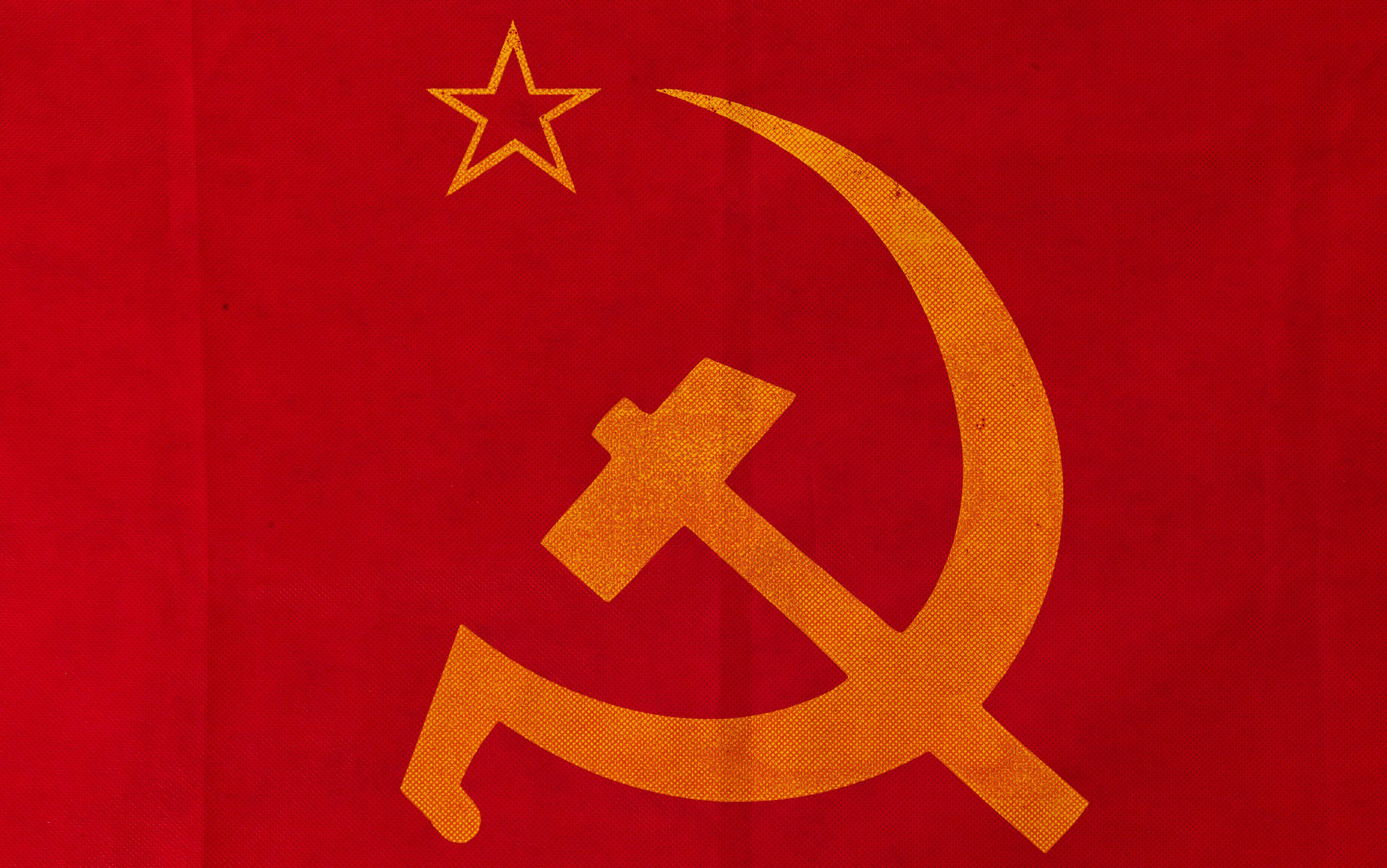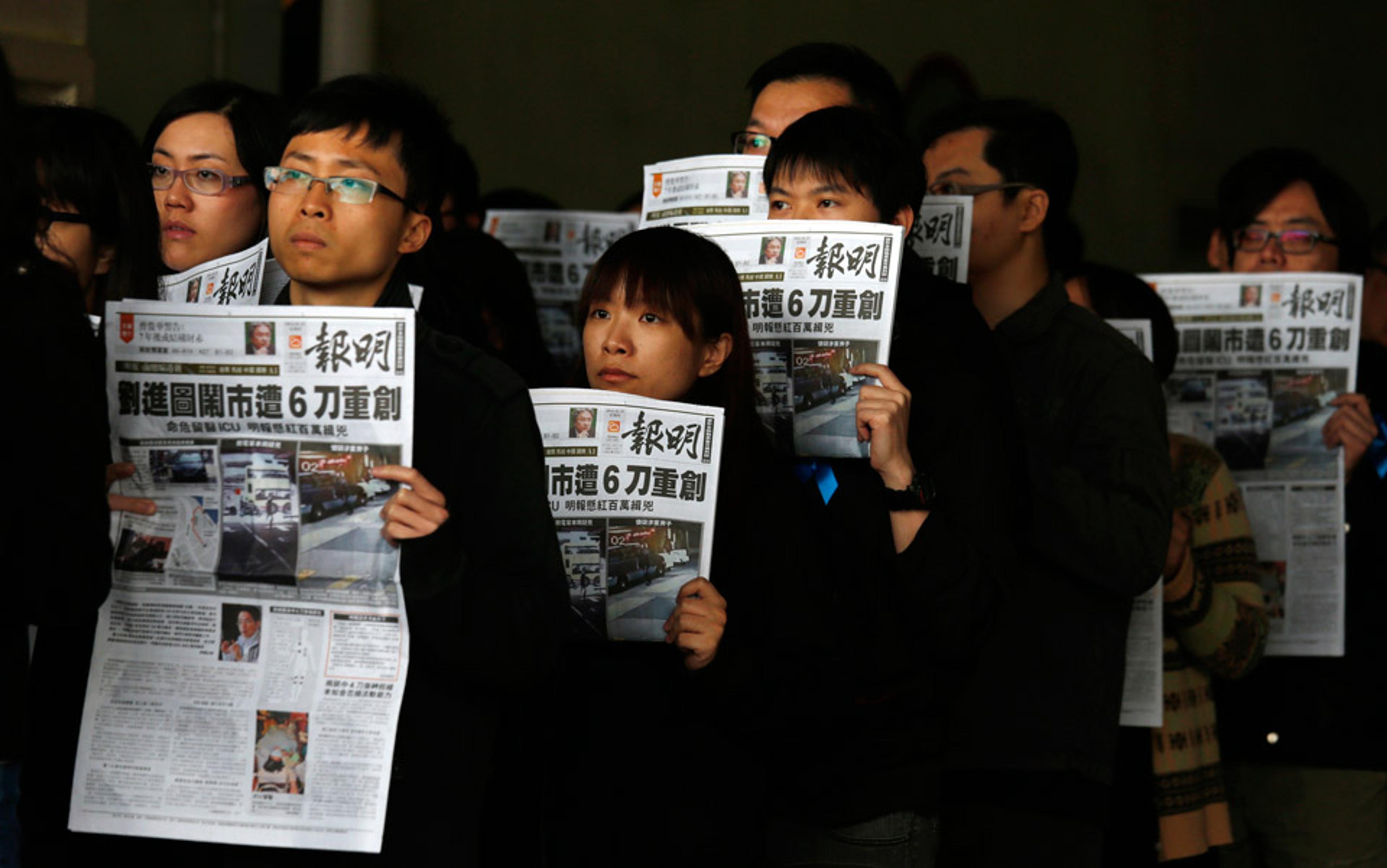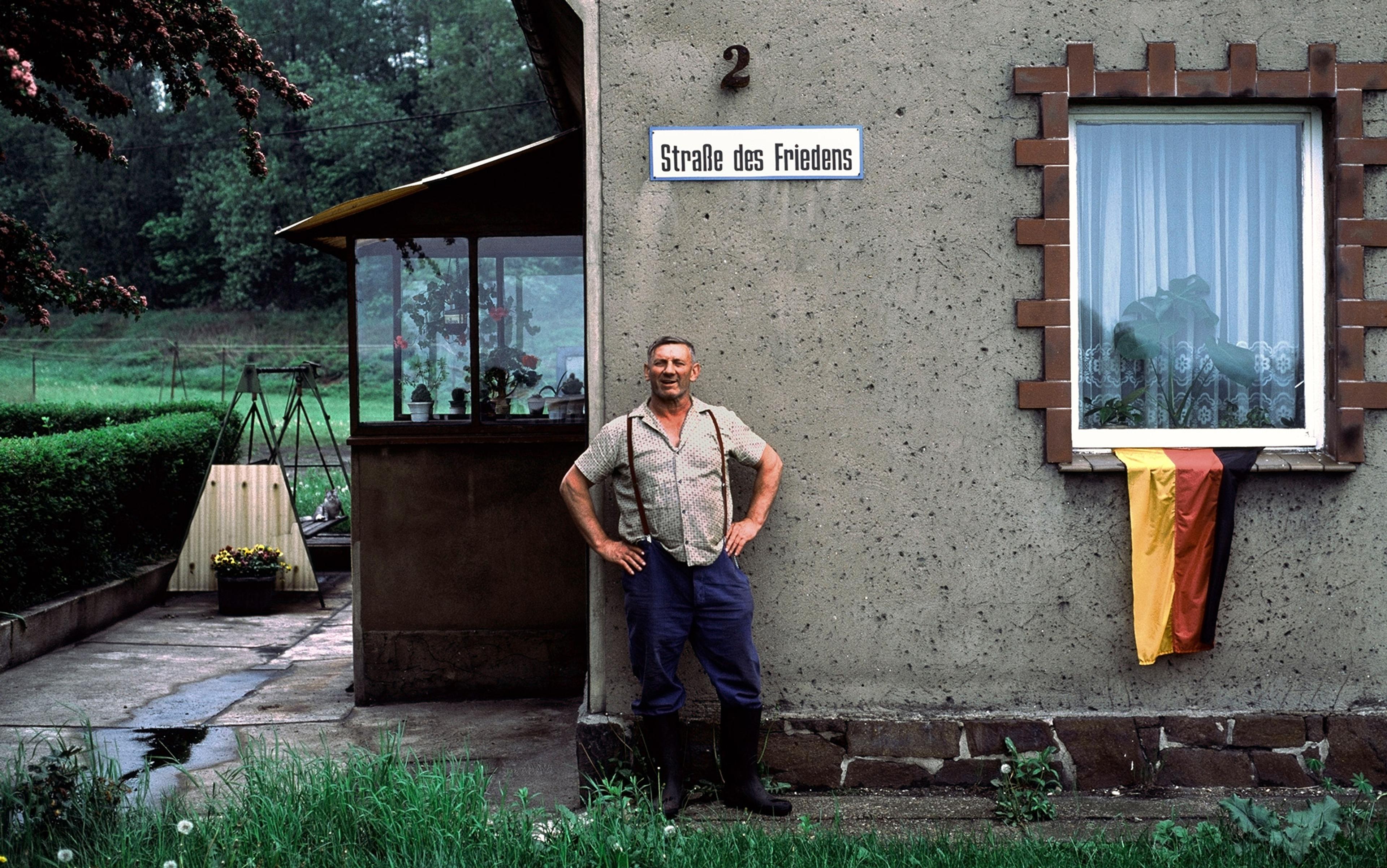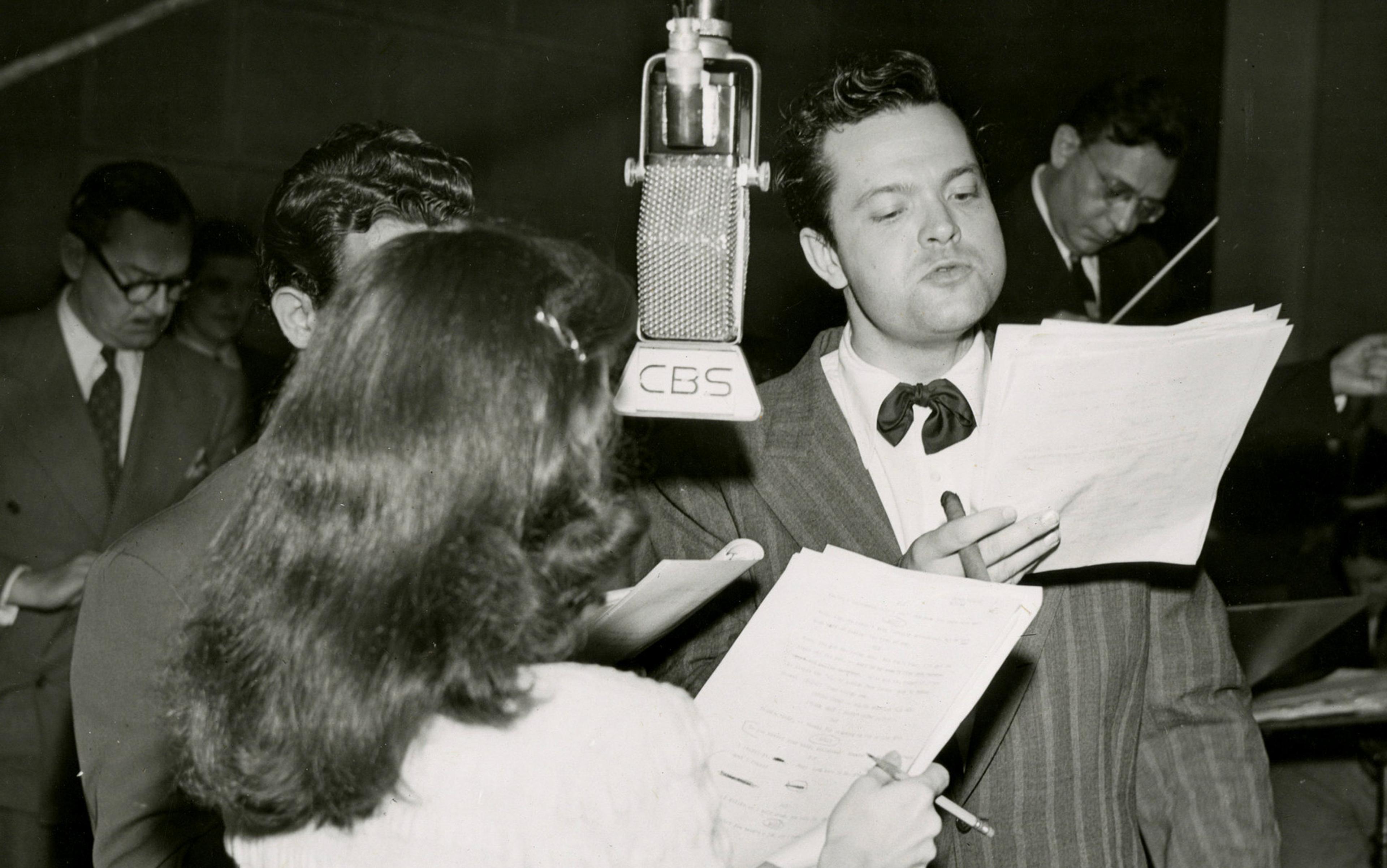On 22 December 1949, with Cold War tensions running high, the United States president Harry S Truman gave a speech to dedicate the carillon at Arlington National Cemetery. Freedom, Truman declared, was the core of the American creed. Those buried at Arlington had given their lives to defend it. They had prevailed, but war once again threatened the freedom they had fought so hard to protect. Few, Truman claimed, wanted war. ‘If we could mobilise world opinion among all men who walk the Earth,’ he said, ‘there would never be another war.’ The problem was that many people were not free to choose peace. Truman called them the captive peoples. They were kept in ignorance by their governments, who prevented them from seeing the truth about the world. They were the puppets of their leaders, who forced them to oppose the West, and to reject its offers of peace and friendship.
To put it in contemporary terms, these so-called captive peoples were the victims of fake news. They were bombarded with lies disguised as truth, and conned into supporting their own oppressors. Truman claimed that if the captive peoples were given access to the truth they would support the goals of the free world. In 1950, his administration proposed a ‘Campaign of Truth’ as part of the battle against Communism.
US officials did not portray their efforts as propaganda. In their minds, they were simply providing accurate information about the world to those who were trapped behind the Iron Curtain. Yet, during the early years of the Cold War, just like today, truth and ideology were intricately intertwined. The US would try to bring truth to the captive peoples of the world, but its truth was never value-free.
The very idea that there were ‘captive peoples’ or ‘captive nations’ would be one of the truths that the US would export. In his speech, Truman did not identify the captive peoples. He didn’t need to. The term had originated in the 1920s with Ukrainian and Caucasian nationalists who protested the incorporation of their homelands into the Soviet Union. But by 1949, most Americans used it to refer to the peoples of the newly Communist countries of eastern Europe.
Anti-Communist east Europeans who had fled their countries after the imposition of Communist rule embraced the label of captive nations. For these exiles and their US allies, the idea that east Europeans were captives was a simple matter of fact. The Communist governments of eastern Europe were dictatorships, and they used terror to consolidate their rule. Criticising these regimes was dangerous. Internal security services (often referred to as the secret police) used networks of informers to weed out opponents. From 1948-53, hundreds of thousands of east Europeans were jailed or sent to labour camps for political reasons.
But calling east Europeans captives was a matter of ideological conviction as well as fact. The term suggested that east Europeans were helpless victims languishing under a foreign oppressor. It implied that they were not responsible for the actions of their governments. It also suggested that no east Europeans truly supported Communism. Rather, they were coerced into submission. In recent decades, historians of eastern Europe have established that this picture is too simple to encapsulate the variety of experience in Communist eastern Europe. During the early Cold War, however, few challenged its validity.
Portraying east Europeans as captives also implied that they were cut off from the rest of the world. In reality, the Iron Curtain was never the impenetrable barrier many imagined it to be. Even if they could not travel themselves, east Europeans had access to ideas and information from the West. A number of western radio stations, including the BBC and Voice of America (VOA), served east Europeans during the Cold War.
One of these radio stations, Radio Free Europe (RFE), was created in 1950 specifically to broadcast to eastern Europe. Based in Munich and staffed by a mix of east European émigrés and Americans, RFE presented itself as a non-governmental organisation funded by the donations of ordinary US citizens who gave ‘truth dollars’ to enlighten captive east Europeans. In reality, the station relied on funding from the CIA.
RFE’s purpose was to provide a counterpoint to eastern Europe’s Communist-led news media. For RFE, ‘Communist news’ was ‘fake news’: it was propaganda with no basis in fact. RFE would challenge this propaganda by exposing its lies. RFE’s mission was to transmit objectively true news stories to eastern Europe. Its employees did not set out to spread disinformation. Nonetheless, their sense of what was newsworthy was strongly influenced by their anti-Communist ideology. Their broadcasts might not have been ‘fake’ but they were definitely biased. This bias would be transmitted to RFE’s audience as the truth.
One RFE programme, ‘The Other Side of the Coin’, was dedicated to exposing the lies in Communist news. This show, which had separate Czech- and Polish-language versions, would repeat stories from the Czechoslovak or Polish news, and then tell the audience what the real facts were. In a May 1951 episode for the Czech version, the narrator declared that the Czechoslovak press heaped up so many lies that the general rule of thumb was to always assume that the truth was precisely the opposite of what the Communist-dominated media asserted.
Some thought racial discrimination didn’t really exist in the US because they’d read about it in Polish newspapers
To judge the impact of their broadcasts to eastern Europe, western radio stations such as RFE were forced to rely on refugees who had illegally fled across the Iron Curtain. Data gathered from these refugees suggested that audiences at home did regard western radio broadcasts as more truthful and more objective than their local news media. A number of refugees reported that they followed the practice RFE suggested in ‘The Other Side of the Coin’, and always assumed that the truth was the opposite of whatever their local media told them. Some Polish refugees took this to extremes. They claimed that racial discrimination must not really exist in the US because they had read about it in Polish newspapers.
Eastern Europe’s domestic news media often presented Bulgarians, Czechs, Slovaks, Poles, Hungarians and Romanians as happily engaged in building socialism. In contrast, RFE’s staffers were certain that east Europeans were powerless victims forced to acquiesce to Communist rule by fear and terror. Many of RFE’s early broadcasts concentrated on refuting what it saw as Communist lies by presenting east Europeans with news about their own oppression.
Some RFE stories were devoted to exposing brutality in prisons and labour camps. One broadcast from the Romanian service from February 1951 consisted entirely of accusations of police cruelty, noting offenders by name and location. ‘The list of the victims of these criminals is much too long to be read,’ intoned the narrator. ‘It is made up of men murdered, men who vanished in the prisons of Bucharest, of patriots who were picked up at home in the eyes of their families, or in the streets, or sent to Russia, or to work on the canal, or to the darkness of the mines at Ocnele Mari, or of the workers beaten up and maimed or disabled for life, of students manhandled because they refused to bow their heads or sell their souls to the Communist beast, or even of innocent women and children accused of being “reactionary”.’
Other programmes were devoted to exposing people who supposedly worked as informers for the secret police. According to refugee reports, these programmes were popular and influential. In 1951, for example, the VOA interviewed a young Hungarian refugee identified only as ‘KA’. KA singled out the Bálint Boda show on RFE as his favourite programme, specifically because Boda named secret police informers on air. A series in which Boda listed all the informers in KA’s home village of Suttor made a big impression on him. ‘He named several persons we would never have thought were informers,’ KA remarked. Whenever Boda named informers in the area, KA wrote down their names. He even once went by bicycle to a nearby village to tell some relatives who lived there the names of those whom RFE alleged were informers. While some of the names surprised KA, he did not doubt Boda’s accusations. The information came from the West, and he believed it. RFE had helped him to see his own community as infested with spies.
Was the information KA heard on RFE actually true? There is no way to know for sure. RFE undoubtedly got the names it broadcast either from a refugee such as KA himself or from an anti-Communist contact inside Hungary. Other than to check it against the statements of other refugees or similar informants, its analysts had no way to fact-check this kind of information. RFE’s journalistic standards would grow more professional, but in the early 1950s, their anti-Communist fervour often persuaded them to accept unsubstantiated statements as fact. Once broadcast, these rumours acquired an aura of credibility.
According to interviews with refugees from the early 1950s, many east Europeans believed that the secret police had informers everywhere. In 1951, for example, one source told RFE that the Czechoslovak secret police had agents in all workplaces, coffeehouses, pubs, restaurants, movie theatres and places of amusement. With every utterance against the regime, the source said, people expected the concentration camp. A Bulgarian who left his country in 1951 made similar statements, declaring: ‘In Sofia, there are more secret police agents than flies. They are everywhere, at every corner of the streets, in every public place.’ The Bulgarian’s claims echoed those of a young Hungarian refugee who told RFE in 1954: ‘The number of spies in the country cannot be figured. If someone makes an unequivocal remark he will be arrested immediately and will be tortured.’
Recent research on eastern European security services from this period makes it clear that there were not nearly as many police informers as these refugees imagined there were. Nonetheless, many east Europeans believed these kinds of statements to be true, as did RFE. The radio station and its audience had got caught in a feedback loop. Listeners heard broadcasts that told them about informers in their neighbourhoods. They believed them, and began to imagine even more informers lurking in the shadows. Some of these listeners then fled and became refugees. They told RFE that informers were everywhere. RFE judged their statements to be probably true because other refugees had given similar accounts, and because they matched RFE’s own presumptions about life under Communism. These new refugee statements were then used as material for future broadcasts.
RFE’s constant emphasis on Communist terror had an another unintended effect: it encouraged east Europeans to see themselves as powerless. RFE staffers eventually realised this. As an internal RFE document noted: ‘by highlighting the scope of this terror, [RFE] unconsciously embarked upon promoting its irresistible power’. By bombarding its audience with tales of Communist evil, RFE potentially increased its listeners’ sense of vulnerability and weakness. One internal analysis asked: ‘As we emphasise the injustices the prisoner peoples are forced to endure, do we not also underline their essential helplessness?’ In other words, RFE encouraged its listeners to identify with the image of themselves as captive peoples.
All the theories predicted that Communism would fall. None required action on the part of ordinary people
Refugees and other informants who spoke to RFE in the early 1950s mirrored the ways that the western media talked about east Europeans as powerless captives. People opposed the Communist system, they said, but felt trapped in the face of its enormous repressive apparatus. A 31-year-old Czech man from the town of Gottwaldov told RFE that everyone in the city was ‘waiting from one year to the next for the liberation, in the way in which a prisoner waits for the day in which he will be released from prison’. Unlike most prisoners, however, their release would only come from outside intervention. The residents of Gottwaldov accepted their status as passive victims. They did not act, they only waited, hoping to be saved by military intervention from the West.
The Czech man from Gottwaldov told RFE that many people he knew took refuge in mystical theories that purported to reveal the day of liberation from Communism. Proponents of the ‘Pyramid Theory’ for example, believed that calculations based upon the length of the corridors in Egyptian pyramids proved that Communism would end on 20 August 1953. Adherents of the ‘Titanic Theory’ claimed that Communists would suffer the same downfall as the designers of RMS Titanic, who mocked the power of God by claiming that they had built an unsinkable ship. All these theories predicted that Communism would suffer an inevitable fall. None of them required action on the part of ordinary people.
Among those who spoke to RFE and other radio stations, such magical thinking was very common. Many expressed it in the form of a war fantasy: they dreamed of a new world war that would drive the Communists from eastern Europe. In the fantasy, the West always won, and eastern Europe somehow escaped with little damage. Boguslawa Smolka-Bauer, a high-school teacher from Poland who left the country in 1951, told an interviewer that most Poles believed war would liberate them from Communism. ‘People think that America will, first of all, hit Russia with atomic bombs, while US armies will immediately invade the satellite countries,’ she said. They imagined the atomic weapons would hurt only the Russians, and Poland would be painlessly liberated.
Some imagined even more incredible scenarios. One Czech source told RFE in 1952 about a persistent rumour that the Americans had developed a ‘soporific bomb’ that would put everyone not wearing a special mask to sleep; those spared the sudden nap could then easily cut the throats of the comatose Communists. A Hungarian tailor claimed that he read in the Communist newspaper Népszava (Referendum) that the US had used a gas in Korea that put opponents to sleep for 12 hours. The Communists, he said, called this an illegal use of chemical weapons. But the Hungarian tailor and his friends thought it was quite humane, and boded well for the possibilities of another world war.
In these fantasies, east Europeans imagined themselves powerless to oppose the state. Its power was too great and its network of informers too deep. They could do nothing but wait and put their faith in miracle weapons or western armies. These fantasies, however, were just that – fantasies. In everyday life, many east Europeans acted in ways that were anything but powerless.
Refugees who spoke to western radio stations noted that east Europeans often broke the law for economic gain. They hoarded scarce goods, traded on the black market, and stole from their workplaces. A Polish black-market dealer told RFE in 1952: ‘Every law can be broken. The only question is how to go about it.’ Anyone who was even ‘a bit clever’ he said could live well through illegal activity. As a Polish refugee claimed in 1951: ‘swindling is an integral part of the Communist system’. Working on the black market was just as illegal as anti-Communist political activity, yet, according to him, everyone did it. A man from Poznań recounted in 1952 that local police had started to check passengers on trains for contraband as part of a campaign to cut down on the black-market sale of food, especially meat. The source claimed that dozens of people a day were being arrested for bringing meat into the city illegally. Despite the threat of time in a labour camp, people continued to smuggle meat in hopes of making an illicit profit. In these narratives, refugees presented themselves as resourceful and clever, not scared and powerless. They defied the police to do as they wanted.
Of course, risking jail to provide for their families does not mean that they could have successfully rebelled against their Communist governments. The failed Hungarian Revolution of 1956 certainly suggests that even genuinely popular uprisings against Soviet bloc governments faced very long odds. Nonetheless, these refugee accounts tell us that the image of captivity promulgated by the West did not adequately describe the realities of life in Communist eastern Europe. East Europeans did not have many of the freedoms Westerners enjoyed. Yet they were not passive bystanders in their own lives. They acted in defence of their own interests and even opposed the state in significant, if small and personal, ways.
RFE analysts and other western observers who talked to these refugees or read their statements did not comment on these contradictions in their stories. Their own ideological blinders prevented them from seeing their significance. According to the totalitarian thinking of the time (still prominent even today), those who lived under Communist rule were by definition powerless. Only those who lived in the West had any freedom. Because they could see the world only within this totalitarian framework, RFE’s journalists, like most of those in the West, could never fully understand Communist societies.
This history brings another dimension to the current obsession with ‘fake news’. RFE’s mission was to counter disinformation, not to spread it. But even though RFE did not try to broadcast lies, its unwavering anti-Communist stance left it open to accepting unsubstantiated rumours as facts, and prevented its analysts from seeing the significance of their own sources. Most of us don’t want to see our own political convictions as ‘ideology’. We want them to be based on facts. The problem is when we can’t tell the difference.
